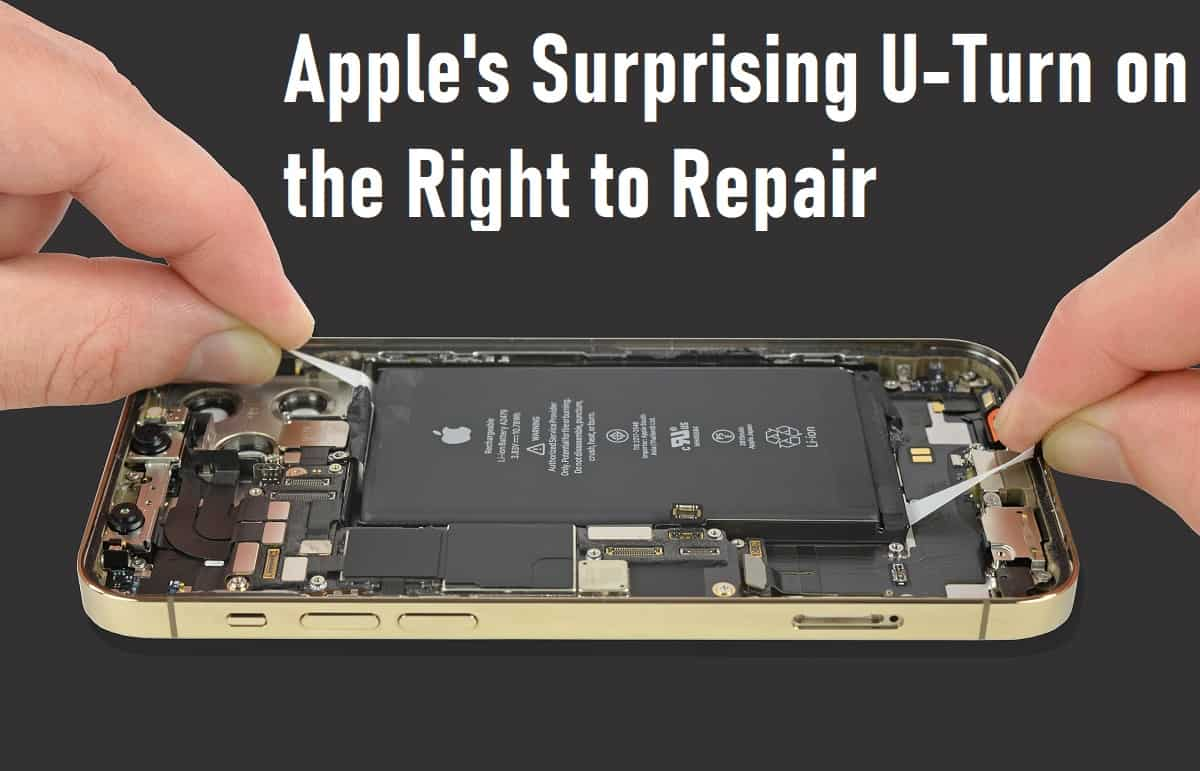Introduction
In a stunning twist of fate, Apple, the once-infamous tech behemoth known for its inflexibility, has taken a U-turn on its stance towards the right to repair. This seismic shift comes as Apple publicly announces its support for a new law in the U.S. state of California that champions the right to repair electronics. For years, Apple staunchly defended its repair process exclusivity, causing frustration among users who found themselves unable to repair their own devices. This turnaround by Apple could mark the beginning of a more sustainable future for both consumers and the environment.
From Resistance to Support: Apple’s Change of Heart
Apple’s reputation for rigidity, especially in terms of repair, has been deeply ingrained in the minds of its users. However, this announcement signals a monumental change for the tech giant. Apple, a company that traditionally opposed the right to repair and even lobbied against it, has now embraced this very concept. This significant pivot begs the question: what exactly does the right to repair entail?
Imagine your favorite chair develops a minor issue—a loose screw or a small tear in the cushion. You wouldn’t discard the entire chair; instead, you’d either fix it yourself or hire someone to do so. The right to repair essentially extends this concept to electronics. It empowers consumers to repair their devices or have them fixed by third-party technicians, rather than being forced into the exclusive repair network offered by the manufacturer.
Apple’s Monopoly on Repairs and Environmental Impact
For years, Apple adopted a monopolistic approach to repairs. It restricted repairs to its certified technicians and guarded its technology and spare parts with zealous determination. This led to a scenario where only authorized repair centers could perform fixes on Apple devices, resulting in higher costs for consumers and generating electronic waste. The monopoly on repairs benefitted Apple financially but contributed to the growing e-waste problem, as users often chose to discard devices rather than repairing them.
Apple’s support for the right to repair signifies a departure from this monopolistic model. If California’s new law passes, it could open up access to Apple’s spare parts, allowing independent repair shops to offer affordable solutions. This move aligns with a greener future by reducing e-waste and promoting a culture of repair and reuse.
The Green Shift and Environmental Concerns
One of the critical outcomes of Apple’s new stance on the right to repair is its potential to mitigate the environmental impact of electronic waste. The use-and-throw culture that repair monopolies cultivate contributes significantly to the burgeoning e-waste crisis. Electronic waste, laden with hazardous components, pollutes landfills and poses serious threats to the environment and human health.
Apple’s change of heart is, undoubtedly, a commendable step towards a more sustainable future. It acknowledges the criticism it has faced, particularly from the EU, regarding e-waste generated by its products. The EU’s insistence on standardized charging ports and its call for reduced e-waste could have served as a wake-up call for Apple. By promoting the right to repair, Apple signals its commitment to reducing its environmental footprint and aligning with global efforts to combat pollution.
A Paradigm Shift in Repair Culture
The impact of Apple’s shift towards supporting the right to repair extends beyond its own reputation. This move could catalyze a broader paradigm shift in the tech industry’s approach to repairs. As one of the tech giants, Apple’s endorsement could pave the way for other companies to follow suit, eventually dismantling the barriers that hinder consumers from fixing their devices.
By allowing third-party repair shops access to its spare parts, Apple not only encourages competition but also empowers consumers with choices. This move democratizes the repair process, giving consumers the freedom to opt for affordable, local repairs rather than being beholden to the manufacturer’s inflated repair costs.
Conclusion: A Hopeful Shift Towards Sustainability
In the realm of tech giants and corporate strategies, Apple’s support for the right to repair is an unexpected and promising turn of events. It signifies a departure from the company’s historical rigidity and monopolistic tendencies in the repair domain. The tech giant’s embrace of this concept could signal a broader shift in the industry towards sustainability and environmental responsibility.
As the California right to repair law gains momentum, it’s important to recognize the implications it holds for consumers, repair shops, and the environment. While Apple’s change of heart is indeed a positive step, the larger impact will depend on how other companies respond and whether this trend transcends borders.
List of Key Takeaways
- Apple’s surprising shift towards supporting the right to repair marks a departure from its historical resistance.
- The right to repair empowers consumers to fix their devices or seek repairs from third-party technicians.
- Apple’s monopolistic repair model led to higher costs for consumers and contributed to e-waste.
- Apple’s endorsement of the right to repair could lead to a more sustainable future by reducing e-waste.
- The move could catalyze a broader paradigm shift in the tech industry’s approach to repairs and encourage competition.
- The impact of this shift depends on how other companies respond and whether the trend spreads beyond borders.















